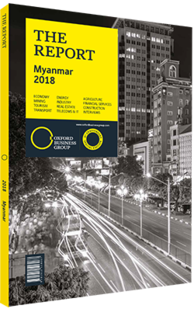Policymakers explore plans to address urban sprawl in Yangon
With increasing demand for housing, public transport and utilities infrastructure, the Yangon authorities are making determined efforts to develop the city. The Yangon City Master Plan, an updated version of which was drawn up at the end of 2016, presents detailed proposals for the upgrade and expansion of the city’s capacity. These plans cover the period up to 2040 and envisage not only a major horizontal extension of the city, but also substantial vertical growth through the addition of a range of new tower blocks and skyscrapers. Also under consideration is the New City project, a proposal for the development of a large spillover city.
Future Planning
The population of Yangon has been increasing exponentially in recent years, brought about by a combination of rural to urban migration and falling mortality, both driven by economic growth. According to the most recent census, the total population of the country was 51.5m in 2014, with around 15.2m – or 29.6% – living in urban areas, a relatively low figure by international standards. Among the urban population, around half lived in three cities: 1.16m in the capital Naypyidaw, 1.22m in Mandalay and 5.21m in the largest city, Yangon, while a further 7.36m residents live in the wider Yangon Region. This means that around one-third of all urban dwellers lived in Yangon in 2014. According to local media, Daw Nilar Kyaw, regional minister for electricity, industry and transport, stated that the population of the region could rise to 8.68m by 2020, 9.69m by 2026 and 10.72m by 2031.
There is clearly a need for urban development to accommodate the prospective increase. Recognising this, the Yangon municipal authorities began joint development of the Yangon City Master Plan with the Japanese International Cooperation Agency (JICA) in 2012. However, following worsening traffic congestion and the election of a new government in 2016, an amended and updated version of the plan was requested and then completed in January 2017. The new version of the study contains a short-term plan, running up to 2020, along with mid-term and long-term blueprints, running to 2025 and 2035, respectively.
The city plan includes 41 priority projects under the strategic urban development rubric and 96 projects under the urban transport development component. The most visible sign so far of the city’s cooperation with JICA is the BRT Lite bus system, which opened in February 2016. The service, which was based on an earlier proposal made by JICA, is currently undergoing expansion (see Transport chapter).
At the same time, the Yangon authorities have been consulting with the UK Department of International Development and the French Development Agency on how best to develop the city, while local authorities have been undertaking projects of their own, outside the framework developed by JICA.
New City
An example of this is the plan for the New City project, which involves the development of the Kyeemyindaing, Seikgyikanaungto and Twante townships in eastern Yangon using 30,000 acres of land. The project envisages the construction of a new power plant and a new grid and water system achieved through public-private partnerships.
According to local media, the project will be implemented by the specially established New Yangon Development Corporation (NYDC) and managed by the regional government. Reports suggest that the NYDC corporation shall seek financial support from the IMF and the International Finance Corporation. Furthermore, Daw Nilar Kyaw has suggested potential changes to building and zoning codes that would, if implemented, initiate a shift toward the construction of tower blocks and skyscrapers in Yangon.
The year ahead should see more details of the New City project and the overall city development plan emerge. While it remains uncertain what combination of approaches the authorities will take to grow the city, it is clear that demand for construction contractors is set to increase as Yangon takes on a new shape.
You have reached the limit of premium articles you can view for free.
Choose from the options below to purchase print or digital editions of our Reports. You can also purchase a website subscription giving you unlimited access to all of our Reports online for 12 months.
If you have already purchased this Report or have a website subscription, please login to continue.

